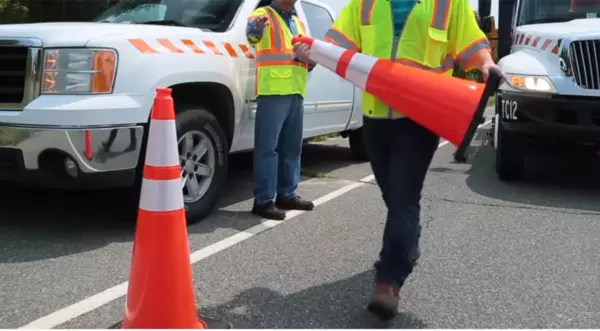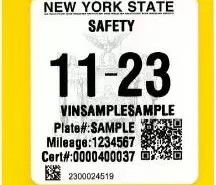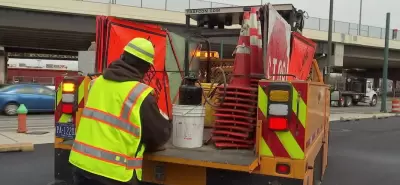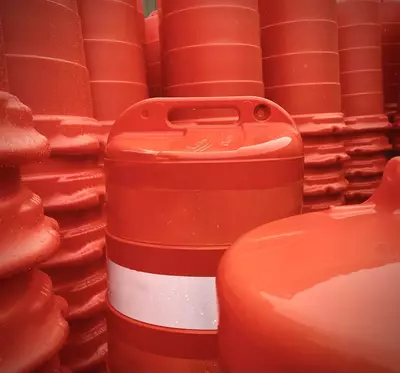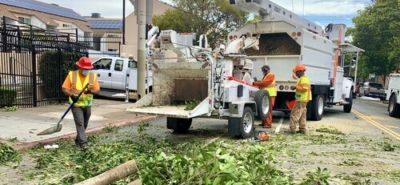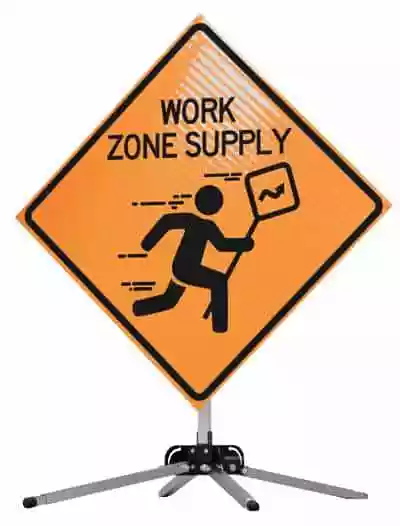Demystifying Work Zone Signs: A Guide to Understanding and Navigating Construction Zones Safely
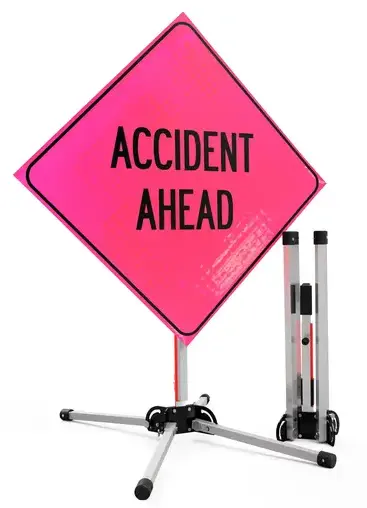 Demystifying Work Zone Signs: A Guide to Understanding and Navigating Construction Zones Safely
Demystifying Work Zone Signs: A Guide to Understanding and Navigating Construction Zones Safely
Are you familiar with the various signs you encounter while driving through construction zones? From orange cones and caution signs to detour markers and road closed messages, understanding and navigating work zone signs is crucial for your safety on the road. In this comprehensive guide, we will demystify work zone signs and help you gain a clear understanding of their meanings and importance.
Work zones can be challenging to navigate, with changing lanes, reduced speeds, and potential hazards. Whether you are a seasoned driver or a beginner, knowing how to interpret these signs is essential to ensure a smooth and incident-free commute.
Join us as we delve into the world of work zone signs, tackling common questions such as what each sign represents, when they are used, and how to react to them. By the end of this guide, you will feel confident in identifying and comprehending work zone signs, ensuring a safer journey for you and your fellow motorists. Stay tuned!
Importance of understanding work zone signs
Work zones are an inevitable part of our daily commute, and understanding the signs associated with these zones is crucial for our safety on the road. Each sign is designed to communicate important information and guide drivers through construction areas. By familiarizing ourselves with these signs and their meanings, we can navigate work zones with confidence and minimize the risk of accidents.
Work zone signs serve several purposes. Firstly, they alert drivers to potential hazards and changes in road conditions. This includes signs indicating lane closures, detours, and reduced speed limits. Secondly, these signs provide crucial instructions on how to navigate through the work zone safely. For example, signs indicating the use of flaggers, temporary traffic signals, or merging lanes help drivers understand how to proceed through the construction area.
By understanding and respecting these signs, we can ensure the safety of both ourselves and the workers on site. Ignoring or misunderstanding work zone signs can lead to accidents, delays, and even fatalities. Therefore, it is essential to familiarize ourselves with the common types of work zone signs and their meanings.
Common types of work zone signs
Work zone signs come in various shapes, sizes, and colors, each serving a specific purpose. Let's take a closer look at some of the most common types of work zone signs you are likely to encounter:
1. Warning Signs
Warning signs are designed to alert drivers to potential hazards ahead. These signs often feature a yellow background with black symbols or text. Examples of warning signs include "Road Work Ahead," "Men Working," and "Uneven Lanes." These signs are placed in advance of the actual work zone to provide drivers with ample time to slow down and prepare for the upcoming changes in road conditions.
It is important to pay close attention to these warning signs, as they prepare us mentally and physically for what lies ahead. Ignoring or underestimating these signs can lead to abrupt lane changes, sudden stops, and collisions.
2. Regulatory Signs
Regulatory signs in work zones are similar to those found on regular roads, but they often have additional instructions specific to the construction area. These signs are usually white with black or red text. Examples of regulatory signs include speed limit signs, stop signs, and yield signs.
It is important to adhere to the instructions on these signs, as they are put in place to ensure the safety of both drivers and construction workers. Failing to follow these signs can result in fines, penalties, and, most importantly, accidents.
3. Information Signs
Information signs provide drivers with important information about the work zone, such as upcoming exits, detours, or changes in road conditions. These signs often feature black text on a white background and can include arrows or symbols to guide drivers. Examples of information signs include "Detour," "Exit Ahead," and "Road Closed."
Paying attention to information signs can help us plan our route accordingly and avoid unnecessary detours or delays. By following the instructions on these signs, we can navigate through the work zone more efficiently and safely.
Understanding the different types of work zone signs is the first step in ensuring a safe journey through construction areas. In the next section, we will explore how to navigate these zones safely and provide helpful tips for driving through work zones.
Understanding warning signs
Driving through construction zones can be challenging, with changing lanes, reduced speeds, and potential hazards. However, by following a few simple guidelines, we can ensure a smooth and incident-free commute through these areas. Here are some tips for navigating construction zones safely:
1. Reduce Your Speed
One of the most important aspects of driving through a work zone is to reduce your speed. Most work zones have reduced speed limits, indicated by signs, and it is crucial to obey these limits. Slowing down allows you to react promptly to unexpected situations and gives construction workers ample time to perform their tasks safely.
Remember, speeding through a work zone not only endangers your life but also the lives of those working on the site. Take your time and drive cautiously.
2. Pay Attention to Flaggers and Signals
Work zones often have flaggers or temporary traffic signals to guide traffic flow and ensure safety. It is essential to pay close attention to these individuals or signals and follow their instructions. Flaggers use hand signals or signs to communicate with drivers, indicating when to stop, proceed, or change lanes.
When approaching a work zone, keep an eye out for flaggers and be prepared to follow their instructions. Ignoring their signals can lead to confusion, accidents, and delays.
3. Maintain a Safe Following Distance
In work zones, it is crucial to maintain a safe following distance from the vehicle ahead. Construction zones often have sudden stops or changes in traffic flow, and having enough space between vehicles allows for a buffer in case of emergencies. The general rule of thumb is to maintain a three-second gap between your vehicle and the one in front of you.
Keeping a safe following distance not only provides you with more reaction time but also reduces the risk of rear-end collisions.
4. Stay in Your Lane
Work zones may have narrowed or shifting lanes due to construction activities. It is important to stay in your designated lane and avoid unnecessary lane changes unless directed by signs or flaggers.
Changing lanes without proper indication or clearance can lead to sideswiping accidents or collisions with other vehicles. Always stay alert and follow the designated path.
5. Eliminate Distractions
Driving through a work zone requires your full attention. Avoid distractions such as using your phone, eating, or engaging in other activities that take your focus away from the road. Distracted driving is dangerous in any situation, but in a work zone, it can have severe consequences.
Keep your eyes on the road and be vigilant of your surroundings. By eliminating distractions, you can react quickly to any unexpected changes or hazards.
By following these tips, you can navigate construction zones safely and reduce the risk of accidents. However, it is essential to remember that work zone signs and regulations may vary depending on the location and nature of the construction. In the next section, we will explore the regulations and requirements related to work zone signs.
Navigating construction zones safely
Work zone signs play a vital role in ensuring the safety of both drivers and construction workers. To maintain consistency and effectiveness, there are specific regulations and requirements that govern the use of work zone signs. These regulations are put in place to standardize the signs, their placement, and their messaging, thereby minimizing confusion and maximizing safety.
In the United States, work zone sign regulations are primarily outlined by the Federal Highway Administration (FHWA). The FHWA provides guidelines and resources for the proper use and placement of work zone signs, ensuring uniformity across the country.
Some of the key regulations and requirements for work zone signs include:
1. Sign Size and Visibility
Work zone signs must be clearly visible to drivers, even from a distance. The FHWA provides guidelines on sign size, color, and font, ensuring optimal visibility during both day and night. The size of the signs may vary depending on the speed limit of the road and the specific requirements of the work zone.
2. Placement of Signs
Work zone signs should be strategically placed to provide drivers with sufficient warning and guidance. The FHWA guidelines dictate the distance at which certain signs should be placed in advance of the work zone. This allows drivers to adjust their speed, change lanes, or take necessary detours in a timely manner.
Additionally, signs should be placed at a height that ensures easy readability for drivers. Proper sign placement is crucial in preventing accidents and maintaining the flow of traffic.
3. Uniformity of Signs
To ensure consistency and avoid confusion, work zone signs must adhere to specific design standards. The FHWA guidelines outline the shapes, colors, symbols, and wording of signs, ensuring uniformity across different work zones.
By following these design standards, drivers can quickly identify and understand the meaning of various signs, regardless of their location.
4. Temporary Traffic Control Plans
In larger work zones, a temporary traffic control plan is often required. This plan includes a detailed layout of signs, devices, and markings to control traffic flow and ensure safety. The plan takes into account factors such as the volume of traffic, work duration, and the specific activities being performed.
Temporary traffic control plans are developed by qualified professionals who assess the unique requirements of each work zone. These plans are essential in minimizing disruptions, optimizing traffic flow, and protecting both drivers and workers.
By adhering to these regulations and requirements, construction authorities can effectively communicate important information to drivers and ensure the safety of all individuals involved. However, it is not only the responsibility of the authorities but also the drivers to familiarize themselves with work zone signs and their meanings.
Tips for driving through work zones
To ensure that work zone signs are understood and respected by drivers, it is crucial to provide proper training and certifications. These programs equip drivers with the necessary knowledge to navigate work zones safely and responsibly.
There are several organizations and agencies that offer work zone sign training and certifications. These programs typically cover topics such as sign identification, meanings, placement, regulations, and safe driving practices within work zones.
The training and certifications vary in duration and content, depending on the specific needs of drivers. Some programs may be designed for commercial drivers, while others cater to the general public. Regardless of the program, the goal is to educate drivers on the importance of work zone signs and how to navigate these zones safely.
By participating in work zone sign training and obtaining certifications, drivers can:
- Gain a deeper understanding of work zone signs and their meanings
- Learn about the regulations and requirements related to work zone signs
- Develop safe driving practices specific to work zones
- Contribute to safer road conditions for both themselves and construction workers
- Minimize the risk of accidents and delays in work zones
These programs not only benefit individual drivers but also contribute to a collective effort in creating safer road conditions. By encouraging drivers to undergo work zone sign training and obtain certifications, we can enhance awareness and promote responsible driving within construction areas.
Work zone sign regulations and requirements
In addition to training programs and certifications, there are several resources and organizations available to help drivers understand and navigate work zones more effectively. These resources provide valuable information, guidelines, and support to ensure a safer commute through construction areas.
1. Federal Highway Administration (FHWA)
The FHWA is a primary resource for work zone sign regulations, guidelines, and standards. Their website offers comprehensive information on work zone safety, including the usage of signs, markings, and devices. Drivers can access resources, publications, and research materials to enhance their understanding of work zone signs.
Additionally, the FHWA provides technical assistance and support to state and local agencies in implementing work zone safety measures. Their expertise contributes to the development of effective strategies and practices for work zone management.
2. State Departments of Transportation
Each state has its own Department of Transportation (DOT), responsible for maintaining and managing road infrastructures, including work zones. State DOTs often provide resources and information specific to work zone signs and regulations within their jurisdiction.
Drivers can visit their state DOT's website to access relevant information, guidelines, and updates on work zone safety. These resources can help drivers stay informed about ongoing projects, detours, and changes in road conditions.
3. National Work Zone Safety Information Clearinghouse
The National Work Zone Safety Information Clearinghouse is a comprehensive online resource dedicated to work zone safety. It offers a wide range of information on work zone signs, regulations, research, and best practices. Drivers can access articles, videos, reports, and other valuable resources to enhance their knowledge and understanding of work zone signs.
The Clearinghouse also provides information on work zone safety events, training programs, and initiatives aimed at reducing accidents and improving safety within work zones.
By utilizing these resources and connecting with relevant organizations, drivers can stay up to date with the latest work zone sign regulations, guidelines, and best practices. This knowledge empowers drivers to make informed decisions and contribute to safer road conditions for everyone.
Work zone sign training and certifications
Navigating construction zones can be a challenging and potentially dangerous task. However, by understanding and respecting work zone signs, we can ensure a safer journey for ourselves and those working on the road.
In this comprehensive guide, we have explored the importance of understanding work zone signs, the common types of signs encountered, and how to navigate construction zones safely. We have also discussed the regulations and requirements related to work zone signs, as well as the training programs, certifications, and resources available to drivers.
Remember to reduce your speed, pay attention to flaggers and signals, maintain a safe following distance, stay in your lane, and eliminate distractions when driving through work zones. By following these guidelines and being aware of the various signs you may encounter, you can contribute to a safer and smoother commute for everyone.
Stay informed, stay alert, and always prioritize safety when encountering work zone signs. Together, we can demystify work zone signs and create a safer environment on the road.
Safe travels!
Work zone sign resources and organizations
When it comes to understanding work zone signs, it's important to know that there are specific training and certification programs available for professionals who work in construction zones. These programs provide an in-depth understanding of the various signs and their meanings, as well as guidelines for their placement and usage.
The Federal Highway Administration (FHWA) offers a comprehensive training program called the Work Zone Safety and Mobility Rule. This program covers topics such as work zone traffic control planning, temporary traffic control devices, and work zone safety management. By completing this program, individuals can become certified work zone safety specialists, equipped with the knowledge to effectively manage work zones and ensure the safety of both workers and drivers.
In addition to the FHWA program, there are also state-specific certifications available, which focus on the unique regulations and requirements of each state. These certifications provide individuals with a deeper understanding of the work zone sign system in their area, ensuring that they can navigate and interpret the signs correctly. By investing in these training and certification programs, professionals can ensure that they are equipped with the necessary knowledge to create safe and efficient work zones.
Conclusion: Staying safe in construction zones
Understanding work zone signs goes beyond just the professionals working in construction zones. As drivers, it's essential for us to have access to resources and organizations that can help us navigate these zones safely. Thankfully, there are several resources available that provide comprehensive information about work zone signs and their meanings.
One such resource is the Manual on Uniform Traffic Control Devices (MUTCD), published by the FHWA. This manual serves as a national standard for traffic control devices, including work zone signs. It provides detailed information on the design, placement, and usage of these signs, ensuring consistency and clarity across the country. By familiarizing yourself with the MUTCD, you can gain a deeper understanding of work zone signs and their significance.
Furthermore, there are organizations dedicated to promoting work zone safety and providing resources for drivers. The American Traffic Safety Services Association (ATSSA) is one such organization, offering educational materials, training programs, and guidelines for work zone safety. By accessing these resources, you can stay informed about the latest developments in work zone sign regulations and best practices, ensuring that you are prepared to navigate construction zones safely.

